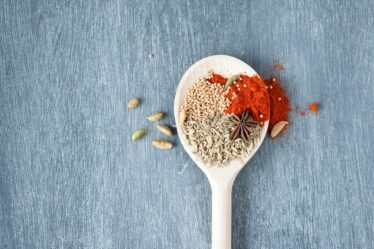
Dried vegetables are exactly what they sound like – vegetables that have been dehydrated to remove their moisture content. This process helps to preserve the nutrients found in fresh vegetables, making them a nutritious option for those looking to incorporate more vegetables into their diet. Dried vegetables can be used in a variety of dishes and offer a range of health benefits.
Key Takeaways
- Dried vegetables are a nutritious option for incorporating into your diet.
- Drying vegetables preserves nutrients and can help reduce food waste.
- Dried vegetables are versatile in cooking and can be stored easily.
- Comparing the nutritional value of fresh and dried vegetables shows that both have benefits.
- Creative ways to use dried vegetables in recipes can add flavor and nutrition to meals.
The Benefits of Incorporating Dried Vegetables into Your Diet
One of the main benefits of dried vegetables is that they provide a burst of nutrients. When vegetables are dried, their water content is removed, but the vitamins, minerals, and antioxidants remain intact. This means that you can still get all the nutritional benefits of fresh vegetables, even when they are dried. In fact, some studies have shown that certain nutrients, such as vitamin C and beta-carotene, may actually be more concentrated in dried vegetables.
Another advantage of dried vegetables is their long shelf life. Unlike fresh vegetables, which can spoil quickly if not consumed in a timely manner, dried vegetables can be stored for months or even years without losing their nutritional value. This makes them a great option for those who want to stock up on healthy food options or for those who live in areas where fresh produce may not be readily available.
In addition to their long shelf life, dried vegetables are also incredibly convenient. They are lightweight and compact, making them easy to store and transport. They can be rehydrated quickly and easily, making them a convenient option for busy individuals or those who don’t have access to fresh produce on a regular basis.
Lastly, dried vegetables are cost-effective. Fresh produce can be expensive, especially if you’re buying organic or out-of-season varieties. Dried vegetables are often more affordable and can be purchased in bulk, saving you money in the long run.
How Drying Vegetables Preserves Nutrients
The process of drying vegetables involves removing the moisture content from the vegetables, which helps to preserve their nutrients. There are several methods of drying vegetables, including air drying, sun drying, and using a dehydrator. Regardless of the method used, the goal is to remove as much moisture as possible while retaining the nutritional value of the vegetables.
When vegetables are dried, their water content is reduced to less than 10%, which inhibits the growth of bacteria and other microorganisms that can cause spoilage. This helps to extend the shelf life of the vegetables and prevent food waste.
In terms of nutrient retention, studies have shown that drying vegetables can actually help to preserve certain nutrients better than other preservation methods, such as canning or freezing. For example, vitamin C is known to be sensitive to heat and can be lost during cooking or processing. However, when vegetables are dried at low temperatures, such as in a dehydrator, the vitamin C content is better preserved.
The Versatility of Dried Vegetables in Cooking
| Vegetable | Nutritional Value | Uses in Cooking |
|---|---|---|
| Dried Tomatoes | High in lycopene, vitamin C, and antioxidants | Used in pasta dishes, salads, and as a pizza topping |
| Dried Mushrooms | Good source of protein, fiber, and vitamin D | Used in soups, stews, and sauces for added umami flavor |
| Dried Peppers | Rich in vitamin C, potassium, and antioxidants | Used in spice blends, marinades, and as a seasoning for meats and vegetables |
| Dried Onions | Contain fiber, vitamin C, and antioxidants | Used in soups, stews, and as a topping for burgers and sandwiches |
| Dried Garlic | Contains allicin, a compound with antibacterial properties | Used in marinades, dressings, and as a seasoning for meats and vegetables |
Dried vegetables can be used in a wide variety of dishes, adding flavor and nutrition to your meals. They can be rehydrated and used in soups, stews, stir-fries, salads, and even baked goods. The possibilities are endless!
One popular dish that can be made with dried vegetables is vegetable soup. Simply rehydrate your dried vegetables by soaking them in water for a few minutes or simmering them in broth until they become tender. Then, add them to your favorite soup recipe for an extra boost of flavor and nutrition.
Dried vegetables can also be used to make vegetable stock or broth. Simply simmer your dried vegetables in water for an extended period of time to extract their flavors and nutrients. This homemade stock can then be used as a base for soups, sauces, and other dishes.
In addition to soups and stocks, dried vegetables can be used in stir-fries and salads. Simply rehydrate them by soaking them in water for a few minutes, then add them to your favorite stir-fry or salad recipe. They can also be added to casseroles, pasta dishes, and even baked goods for added flavor and nutrition.
Tips for Storing and Using Dried Vegetables
Proper storage techniques are important to ensure that your dried vegetables remain fresh and flavorful. It is best to store them in an airtight container in a cool, dry place, away from direct sunlight. This will help to prevent moisture from getting into the container and causing the vegetables to spoil.
When using dried vegetables in recipes, it is important to rehydrate them properly. Most dried vegetables can be rehydrated by soaking them in water for a few minutes or simmering them in broth until they become tender. The amount of time needed for rehydration will vary depending on the type of vegetable and its size.
To incorporate dried vegetables into your meals, you can add them directly to soups, stews, stir-fries, or salads. You can also grind them into a powder and use them as a seasoning or flavoring agent in your favorite recipes. Another option is to blend them into smoothies or juices for an added nutritional boost.
Comparing the Nutritional Value of Fresh and Dried Vegetables

When comparing the nutritional value of fresh and dried vegetables, it is important to consider both the macronutrients (carbohydrates, proteins, and fats) and the micronutrients (vitamins and minerals).
In terms of macronutrients, fresh and dried vegetables are relatively similar. Both contain carbohydrates, proteins, and small amounts of fat. However, the drying process can cause some loss of nutrients, including certain vitamins and minerals.
When it comes to micronutrients, studies have shown that certain nutrients, such as vitamin C and beta-carotene, may actually be more concentrated in dried vegetables. This is because the drying process removes the water content from the vegetables, leaving behind a higher concentration of nutrients.
How Dried Vegetables Can Help Reduce Food Waste
One of the major benefits of drying vegetables is that it can help to reduce food waste. Fresh vegetables have a relatively short shelf life and can spoil quickly if not consumed in a timely manner. This can lead to a significant amount of food waste, which is not only wasteful but also harmful to the environment.
By drying vegetables, you can extend their shelf life and prevent spoilage. Dried vegetables can be stored for months or even years without losing their nutritional value. This means that you can stock up on vegetables when they are in season or on sale and use them at a later date.
Another way that drying vegetables can help reduce food waste is by using leftover fresh vegetables for drying. If you have vegetables that are starting to wilt or spoil, instead of throwing them away, you can dehydrate them and use them later. This not only helps to prevent food waste but also allows you to make the most of your fresh produce.
The Environmental Benefits of Drying Vegetables
In addition to reducing food waste, drying vegetables also has environmental benefits. The production and transportation of fresh produce can contribute to greenhouse gas emissions and other environmental impacts. By drying vegetables, you can reduce the carbon footprint associated with fresh produce.
Compared to fresh vegetables, dried vegetables have a much lower water content, which means that they are lighter and require less energy to transport. This can help to reduce fuel consumption and greenhouse gas emissions associated with transportation.
Drying vegetables also helps to reduce the demand for fresh produce, which in turn reduces the need for intensive agricultural practices. These practices often involve the use of pesticides, fertilizers, and other chemicals that can have negative impacts on the environment. By opting for dried vegetables, you can support more sustainable farming practices and reduce your environmental footprint.
Creative Ways to Use Dried Vegetables in Recipes
There are countless ways to use dried vegetables in recipes, from soups and stews to snacks and side dishes. Here are a few creative ideas to get you started:
– Add dried vegetables to your favorite pasta sauce for added flavor and nutrition.
– Use dried vegetables as a topping for pizzas or flatbreads.
– Blend dried vegetables into a powder and use it as a seasoning for roasted vegetables or grilled meats.
– Make a vegetable dip by blending rehydrated dried vegetables with yogurt or sour cream.
– Add dried vegetables to your favorite grain bowl or salad for added texture and flavor.
– Make vegetable chips by thinly slicing rehydrated dried vegetables and baking them in the oven until crispy.
Embracing Dried Vegetables for a Healthier Lifestyle
In conclusion, dried vegetables offer a range of health benefits and can be a nutritious addition to your diet. They provide a burst of nutrients, have a long shelf life, are convenient to use, and are cost-effective. The drying process helps to preserve the nutrients found in fresh vegetables, making them a great option for those looking to incorporate more vegetables into their meals.
By properly storing and using dried vegetables, you can enjoy their nutritional benefits all year round. Whether you’re adding them to soups, stews, stir-fries, or salads, or using them as a seasoning or flavoring agent in your favorite recipes, dried vegetables offer versatility and convenience.
In addition to their nutritional benefits, drying vegetables can also help reduce food waste and have environmental benefits. By extending the shelf life of vegetables and reducing the demand for fresh produce, you can help reduce greenhouse gas emissions and support more sustainable farming practices.
So why not give dried vegetables a try? Embrace them as a healthier option and enjoy the benefits they have to offer. Your taste buds and your body will thank you.
If you’re a fan of dried vegetables, you’ll love this article on Flavorful Sips that explores delicious ways to cook butter beans. Butter beans are not only packed with nutrients, but they also have a rich and creamy texture that makes them perfect for a variety of dishes. From soups and stews to salads and dips, this article provides creative and mouthwatering recipes that will surely satisfy your taste buds. So, if you’re looking for new ways to enjoy dried vegetables, check out this article and get ready to elevate your culinary game!



